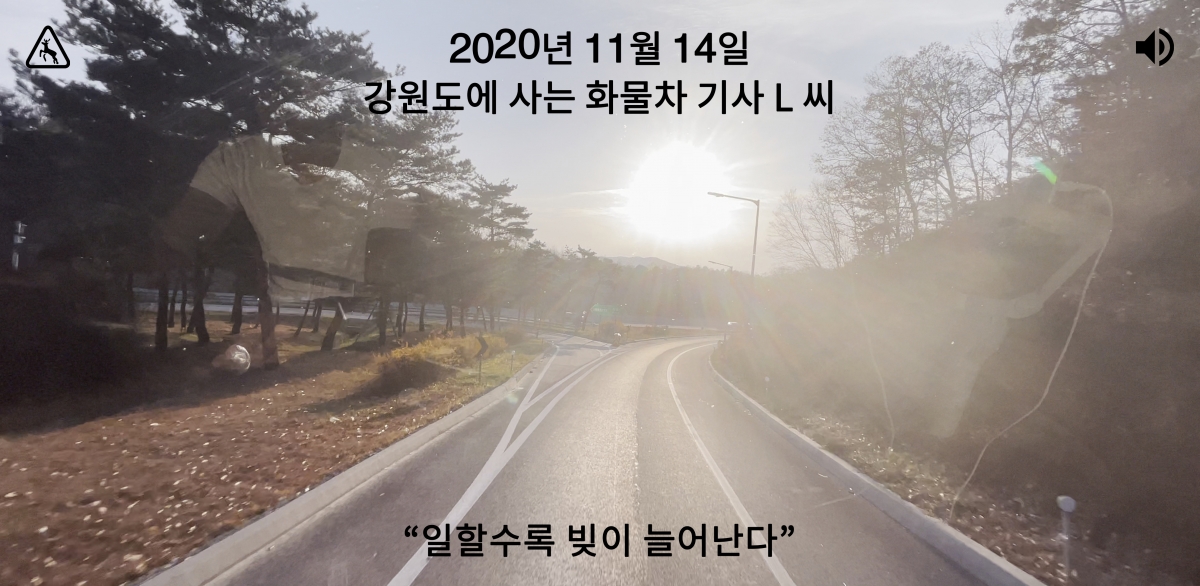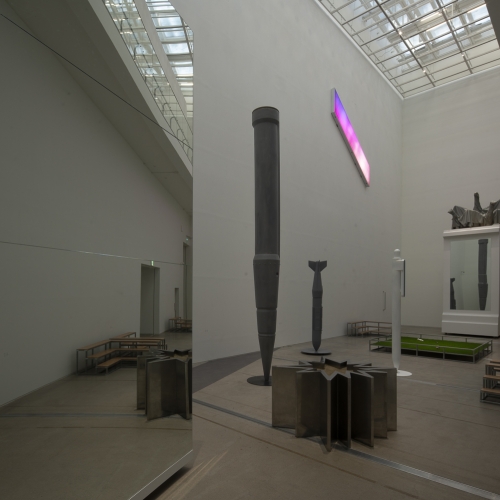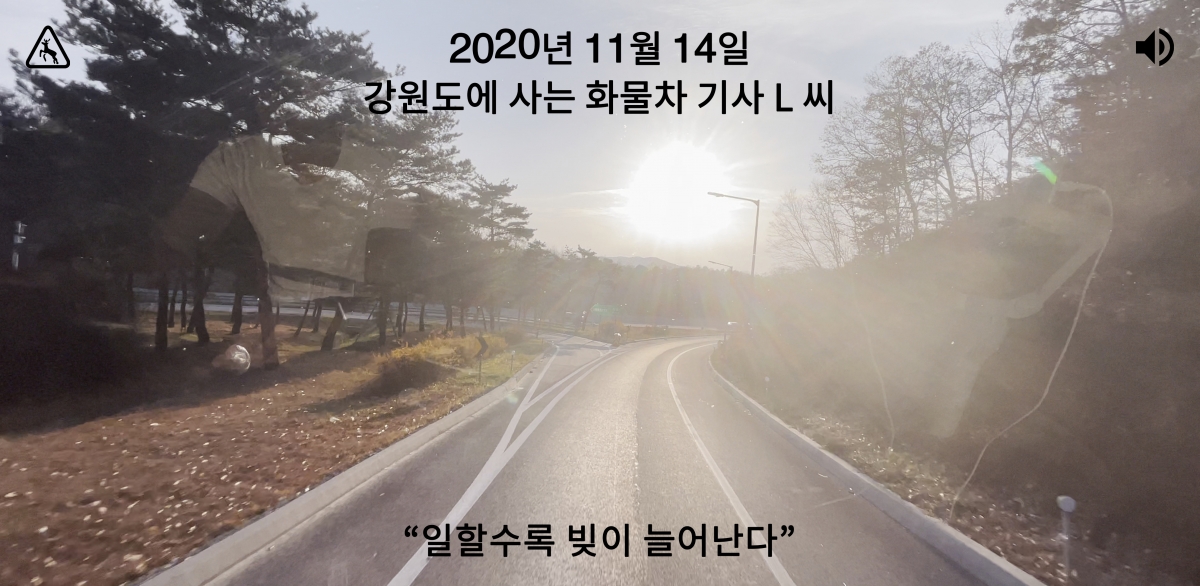(upper image) screenshot from website (www.payload.live)
Although assumed to be a recent phenomenon, exhibitions have long taken place through the medium of the screen. Since its early days, digital media claimed space for itself as an active zone in which anyone can participate, and many people have used its platforms to create exhibitions. What is the precise nature of a virtual space mediated through the screen? The screen as a nexus of networks has always implied the existence of an expanse beyond, far greater than what appears to the eyes. Users stand at a place shielded from the view of the whole, simply with the knowledge of what kind of space they were in contact with at that moment in time and what they could do there based on the fragmented roles permitted to each individual. This does not differ from the ways we learn about the world. However, even if we could say that it is impossible to know everything about reality, while we assert that it is certainly there, the space beyond the screen could be thought of as a complex blackbox that amplifies our reality into a more uncertain and phantomlike mirage.
The established context of an exhibition is determined through charting a course through an ambiguous terrain. Letʼs identify a couple of patterns. First, there is an empty space, without gravity and of an undetermined size. This is not particularly supernatural but possesses the basic qualities of an empty document like a blank piece of paper. Fundamentally, digital media provides virtual blank sheets of paper, necessarily adhering to regular syntax, and the fact that this becomes a place of residence signifies that our daily lives continue to be encircled by the flow of these documents. However, when the early WorldWide Web based entirely on text was first introduced as a graphic web browser, this empty sheet of paper was redefined as a promising commons, a space which could be charged with visual rules and sensual stimulations rather than the lines of a document. People built their homes and composed villages on these sites, like pioneers to an outer space planet. These experiences ignited hopes of a collective imagination that promised to open up a new continent that could circumvent conventions, established systems and rules. The autonomous spaces made within this space by artists was
more like an advanced base by intrepid migrants exploring a new settlement.
Nevertheless, this virtual terrain within the screen rapidly developed into a type of new town, which is systematically planned and regulated. People no longer needed to build their homes themselves, and progressively, the metaphor of a house started to decline. As it became clear that digital media was not simply an adjoined space, but a mass of pure pathways, and hence could modify the collective body of the city and its inhabitants, mobile populations or data traffic emerged as a key measurement for determining the value of space. It was now no longer sufficient that the expanse be ample enough for each person to have their own room. Even if one could do whatever they wanted to do there, it became meaningless if nobody was watching. The new town of digital media became a platform in which anybody could exhibit themselves, and furthermore, evolved into a game motivating everyone to maximize their known value. From online shopping malls to social networks, the labyrinthine pathways rearranging themselves on each personʼs screen according to user preferences became a variable structure in the form of a new downtown.
The original city centre has always enabled a sense of exhibitionism or public display. What is seen by the eye is important, and the logic driving the value of exhibitions – an exhibition is more culturally important when seen by more people ‒ fundamentally reflects a secular urban culture. The meaningless or confounding act of seeing something becomes acute, an objective of its own, as a separately established system, and the visual device of the metropolis would have played a part in commanding control over this system. The city reveals and conceals countless elements through means that not a single person has complete control over. Here, digital media has established itself as a new layer of the city, revising the rules of visibility, and, to such ends, securing a focal point accessible through the screen has become a prerequisite element of art institutions. However, such virtual spaces served, until not so long ago, simply to promote actual exhibition halls,
in the form of hypothetical ‘billboardsʼ by ‘boulevardsʼ, or ‘information centersʼ, or ‘multiuse bulletin boardsʼ for affiliated events, and it was rare that they would be seriously considered as alternatives to the exhibition hall. The museum has always been a constituent of the city out in the open, and had always presented itself as a multi- dimensional, autonomous whole that could not be entirely encapsulated through the screen in spite of continuously being represented and photoshopped through digital media.
What will happen if the big talk of the digital media field becomes a reality, and absorbs everything in our living reality, deconstructing it and rearranging it in more optimized ways? This inconclusive question has accelerated into our lives in recent months due to the spread of a contagious disease, which, in turn, has led to the closure of multiple public institutions. Digital media has been activated as an emergency shelter. As a result, our living spaces have become temporary media centres, rather than spaces that could open ‘a city of the commonsʼ to all made accessible through the screen. As the functions previously dispersed across the city were concentrated into a single home, or a single screen, everything began to overlap, invade and compete. Such is the defining quality of high-density spaces, in which a single place simultaneously becomes nursery school, school, office, bedroom, restaurant, supermarket and government office. Many have struggled with whatever means available to establish an ‘exhibitionʼ within such spatio-temporal chaos. Nevertheless, this chaos has also served as an opportunity for us to reaffirm what is made to be seen and what remains unseen when our 24/7 is so tightly locked into the commanding frame of our high-resolution screens.
Ultimately, exhibitions continue to be called upon due to the existence of certain things that are not very visible in their natural state. The screen will continue to present an alternative, when the exhibitions, first established while trying to bring into focus the unseen with narrowed eyes, start to search for a terrain of their own, and hope to be encountered by other eyes. However, the screen is a device which is reinforced by limiting our line of sight, like our eyelids, or the walls of a physical exhibition hall. The screen starts to cling tighter to our eyes by promising that it can bring whatever we desire in front of our eyes, or more accurately, that it will fill our field of vision purely with that which attracts or entrances us. While
the panoramas it reveals to us are to a certain degree illusions, the act of boldly tearing up these illusion to reveal their true nature is also, in general, an illusion. To make something seen requires unseen effort. Within our visible world, artificially constructed of multiple layers, it really is no easy task to see or display the things that knock on the doors of our eyes.

Bad New Days (Kim Nayoung, An Junhyung, Lee Minsung, Jang Youngmin, Joo Hyunwook), ‘streaming/cuttingʼ, 2020. www.payload.live / Image courtesy Bad New Days







